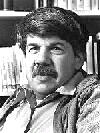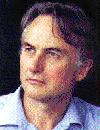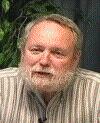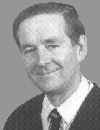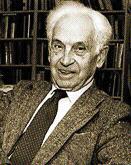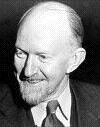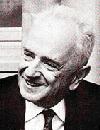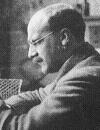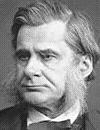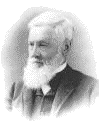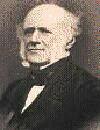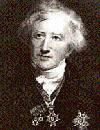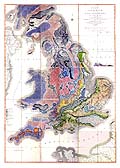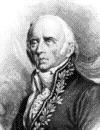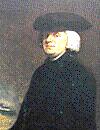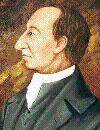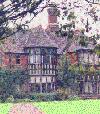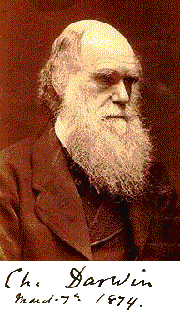 |
Evolution Links to our Past News of the Present Insight for the Future |

© Linnean Society of London |
|
|
|
| ||||||||||||||||||||||||||||||||||||||||||||||||||
|
THE ESSAY in science is an art form as well as a means of communicating ideas. All scientists publish their findings somewhere, but relatively few produce books or monographs. Even fewer produce essays. Modern readers who are interested in evolution or natural history usually recognize the names Gould, Zimmer and Dawkins as essayists. But relatively few are those who have read Mayr, Simpson, Dobzhansky and many older writers. All of these authors are worth reading today. In some cases they are worth reading not only for the beauty of their prose and the forcefulness of their argument, but also to discover what earlier generations of scientists once thought. Darwin and Wallace are omitted here on purpose. You will find them on my Darwiniana Page.
| ||||||||||||||||||||||||||||||||||||||||||||||||||

Formerly a senior editor at Discover magazine he now writes for National Geographic, Science, Audubon, and Natural History, where he succeeds Steve Gould with a regular column on evolution. His journalism prizes include the Pan-American Health Organization Award for Excellence in International Health Reporting, the American Institute Biological Sciences Media Award, and the Everett Clark Award for science writing. | ||||||||||||||||||||||||||||||||||||||||||||||||||

After a Lost Balloon : Chapter 1 from At The Water's Edge : Fish with fingers, whales with legs, and how life came ashore but then went back to sea. The story of vertebrate evolution and the closing of Romer's Gap. Amazon.com book details.
A professor of cell biology at Brown University, Dr. Miller wears a number of other hats. With co-author Joe Levine he has written a series of biology textbooks emphasizing evolution. His book Finding Darwin's God is an excellent response to the creationism and intelligent design movements. His essays, participation in creationism debates, and appearances in PBS and other documentaries on evolution give him a high public profile.
Dr. Miller's Home Page
Top Ten Facts about the Human Genome : This is a short course by Professor Miller that might whet your appetite for more information about human genetics and DNA
Dr. Gould succeeded Dr. Mayr in the teaching chair at Harvard. Through his many books and monthly essays in Natural History magazine he became the foremost popularizer of evolution in the United States. His incisive wit and pugnacious character, not to mention his polymath brilliance, cast him in the roll of the teacher you had to love or hate. His last book, The Structure of Evolutionary Theory was far too long. His life was far too short.
Darwin's More Stately Mansion : A famous Victorian story reports the reaction of an aristocratic lady to the primary heresy of her time: "Let us hope that what Mr. Darwin says is not true; but, if it is true, let us hope that it will not become generally known."
To my mind Dr. Dawkins has been to the UK what Dr. Gould has been to the USA, its finest teacher of evolution. Equally witty and pugnacious, I consider Dr. Dawkins' essay The Forty-fold Path to Enlightenment (in his book Climbing Mount Improbable) one of the finest pieces of writing in natural history. Dawkins holds the Charles Simonyi Professorship in the Public Understanding of Science at Oxford University.
An Open Letter to Prince Charles : Your Reith lecture saddened me. I have deep sympathy for your aims, and admiration for your sincerity. But your hostility to science will not serve those aims; and your embracing of an ill-assorted jumble of mutually contradictory alternatives will lose you the respect that I think you deserve.
Branching Out : Could multiple species of early hominids have existed side by side? This is a review by Dawkins of the book Extinct Humans by Ian Tattersall and Jeffrey H. Schwartz.
Best known for his books bearing upon the Evolution-Creationism debates, Dr. Ruse is a polymathic philosopher and historian of science, particularly with respect to the history of evolutionary thought. Based largely on his testimony, "Creation Science" was defeated in Arkansas in 1981 as being devoid of science. His book Can a Darwinian be a Christian should be required reading for all fundamentalists.
Darwinism and Atheism: A Marriage Made in Heaven? : Somewhat immodestly let me elevate myself up to the status of Wilson, Dawkins, Dennett, and Lewontin, and consider a Darwinism-based argument which I have myself put forward against Christian belief.
Probably unheard of by most readers of this website, Dr. Forsdyke is unusual among modern essayists in science. While he has published a great deal in technical journals of science and has two recent books to his credit, his work as an essayist is presented almost exclusively on his own academic website in well written and highly illustrated pages. It is to be hoped that this body of work will survive his tenure in academia.
Dr. Forsdyke's Homepage
Pellegrino University Research Professor and Honorary Curator in Entomology at Harvard University, Wilson is the author of 18 books, 2 of which have received the Pulitzer Prize; an ardent defender of the liberal arts; and a promoter of global conservation of species and natural ecosystems. Founded the discipline of Sociobiology, more commonly called Evolutionary Psychology today, and cofounded the study of island biogeography.
A Global Biodiversity Map : Commentary in Science 289 (5488):2279 [2000]. As genomics and biomedicine are to human health, so ecology and conservation biology are to the planet's health. Unfortunately, compared with their sister disciplines, ecology and conservation biology are still disadvantaged.
The Biological Basis of Morality : in The Atlantic [1998]. Do we invent our moral absolutes in order to make society workable? Or are these enduring principles expressed to us by some transcendent or Godlike authority? Efforts to resolve this conundrum have perplexed, sometimes inflamed, our best minds for centuries, but the natural sciences are telling us more and more about the choices we make and our reasons for making them.
Dr. Mayr helped establish the neodarwinian synthesis and was a tireless teacher of evolution. His work, combined with that of Dobzhansky and Simpson who are also represented here, established the basis for the modern theory of evolution. In addition to careers in Ornithology, Taxonomy and Systematics, he was a Professor of Zoology and Evolutionary Biology at Harvard and director of its Museum of Comparative Zoology.
Ernst Mayr died on February 3, 2005, at the age of 100.
What is a Species, and What is Not? : The Old Man of American Biology reviews the variety of species concepts, especially his Biological Species Concept, and responds to his critics. Originally published in Philosophy of Science 63:262-277 [1996] and here borrowed from the AAAS website.
Dr. Simpson was a paleontologist and taxonomist whose influential text The Principles of Classification and a Classification of the Mammals [1945] remained the standard for treatment of the subject for many years. His was the last of a series of major publications, by authors from several different disciplines, that became known as the neodarwinian synthesis, the foundation for modern-day evolutionary biology.
Relationships of Local and Continental Mammalian Faunas : Jour. Paleontology 10 (5): 410-414 [1936].
Born in Russia where he trained as an entomologist, Dr. Dobzhansky emigrated to the USA where his research with fruit flies led to many publications in genetics. He was one of the principle founders of the neodarwinian synthesis and trained many students in biology, genetics and evolutionary theory. In contradististinction to some other noted scientists of his time, Dr. Dhobzhansky never relinquished his religious orthodoxy.
Evolution in the Tropics : American Scientist 38 (2): 209-221 [1950]. Natural selection augments the frequency of favorable types and reduces the frequency of unfavorable types. Populations thus react to changes in their environment by adaptive modifications. This is one of the rare occasions when evolutionary changes taking place in nature under the influence of natural selection can actually be observed in the process of happening.
A mathematician perhaps best known for Haldane's Dilemma, he was one of the major synthesizers of evolutionary theory in the 1930s. Unfortunately, not many of his writings are currently on the Internet. Those that are tend toward his viewpoints on politics and religion. He has been enshrined in the mythology of science for remarks attributed to him about "God's fondness for beetles—He made so many of them.".
On Being the Right Size : Haldane's essay is widely anthologized and frequently quoted, at least when the subject of biological scaling crops up.
Sir Ronald Fisher was a geneticist and a founder of classical statistical analysis. His book The Genetical Theory of Natural Selection in 1930 helped pave the way for the modern Darwinian synthesis, giving it strong mathematical and statistical support. He was Galton Professor of Eugenics at the University of London and later Balfour Professor of Genetics at the University of Cambridge. He ended his career in Australia.
Collected Papers of R. A. Fisher Relating to Genetics, Evolution and Eugenics :
These are all large files in .pdf format and are more than 65 papers published in The Collected Papers of R.A. Fisher edited by J.H. Bennett and published in five volumes by the University of Adelaide between 1971 and 1974. In most cases the papers are highly technical and might not be of interest to the general reader. One might at least view the list of titles to see the breadth of research that Fisher conducted.
A tireless advocate of Evolutionary Theory, Professor Huxley took on Richard Owen, Bishop Wilberforce—any and all of Darwin's critics—even though he did not fully accept all of Darwin's ideas. He was also a tireless advocate for secular public education and the professionalization of science. Like A. R. Wallace he was outspoken on a wide range of issues. He is credited with having coined the term agnosticism.
Thirty-two Essays by Thomas H. Huxley : A fair library of Huxley's writings.
32 files listed.
America's leading botanist in the mid-19th century, and Darwin's strongest early supporter in the USA, in 1857 he became only the third scientist (after Hooker and Lyell) to learn of the theory from Darwin. He debated L. Agassiz between 1859 and 1861 on variation and geographic distribution. His discovery of close affinities between East Asian and North American floras was a key piece of evidence in favor of evolution.
Natural Science and Religion : I am invited to address you upon the relations of science to religion, in reference, as I suppose, to those claims of natural science which have been thought to be antagonistic to religion, and to those assumptions connected with the Christian faith which scientific men in our day are disposed to question. [1880].
A zoologist and paleontologist, Agassiz came to the USA in 1846, becoming a professor at Harvard in 1848. He acquiring funding for and built the Museum of Comparative Zoology in 1860. He urged the creation of a National Academy of Sciences, becoming a founding member in 1863, and was appointed a regent of the Smithsonian Institution. Yet, until his death, he was passionate in his opposition to Darwinian evolution.
Geographical Distribution of Animals : Christian Examiner and Religious Miscellany 48 (2):181-204 [1850].
The leading anatomist and paleontologist in England during the period of Darwin's voyage and later writings, Darwin turned over to Owen the fossils he collected for description. Owen was later a leading opponent of Darwin's ideas about evolution and engaged in lengthy and acrimonious public debates with Thomas Huxley, Darwin's principle defender. Owen's review of On the Origin of Species is available here.
Review of On the Origin of Species : In the Edinburgh Review 3:487-532 [1860].
In October of 1844, a small bomb went off in the world of British science. The bomb took the form of a 400-page book with the grand title Vestiges of the Natural History of Creation, presenting a comprehensive account of the history of the Earth, from the formation of the Solar System through the development of plant and animal life, up to the origins of humankind. Strangely, there was no author's name on the cover.
Vestiges of the Natural History of Creation : [1844 1st ed. in HTML format] : (anonymous). J. Churchill, 390 pp., [1844]. This was a book that everyone seemed to criticize. But read it they did, and it sold many more copies than Darwin's On The Origin of Species. A number of noted personalities were "evolutionists" before Darwin published, based on the reading of this book. President Abraham Lincoln was one of them. Also available as
Vestiges of the Natural History of Creation : [1857 ed. as full-page photos]
During Darwin's lifetime Lyell was the world's leading exponent of geology and one of the principle influences on Darwin's thinking. Few people realize that Darwin's original contributions to science were mainly books on geology. Lyell was Darwin's main sounding board during the 20 years he spent developing the Theory of Evolution, but Lyell never completely agreed with Darwin about natural selection or the descent of man.
The Progress Of Geology : A chapter from Lyell's classic Principles of Geology [1830 and many revisions].
Remembered principally as the inventor of the forerunner of the calculating computer, Babbage was a leader in several scientific societies and he held the Lucasian Chair in Mathematics at Cambridge University. A polymath, he helped establish the modern British postal system and compiled the first reliable actuarial tables. He also participated in the pre-Darwinian debates in natural theology, contributing to the Bridgewater Treatises.
The Ninth Bridgewater Treatise : 2nd Ed., London, [1838]. The first class of truths then (those of Pure Mathematics) appears to rest on necessity. The second, (the Laws of Nature,) on necessity and our external senses. The third, (those of Natural Religion,) on our external senses and internal consciousness. The last, (those of Revelation,) on human testimony. I have placed them in the only order which, in my opinion, is consistent with truth; convinced that it is more injurious to religion to overrate, than to undervalue the cogency of the evidence on which it rests.
Working at the Musee National d'Histoire Naturelle, Cuvier established the fact of past extinction, founded vertebrate paleontology as a scientific discipline and created the comparative method of organismal biology. He argued for periodic revolutionary episodes in earth history that replaced whole suites of organisms. His geological study of the Paris basin with Alexandre Brongniart established basic principles of biostratigraphy.
Discourse on the Revolutionary Upheavals on the Surface of the Globe : And on the Changes Which They Have Produced in the Animal Kingdom.
William "Strata" Smith, a civil engineer and surveyor, was well acquainted with areas in southern England where "limestone and shales are layered like slices of bread and butter." His hobby of collecting and cataloging fossil shells from these rocks led to the discovery that certain layers contained fossils unlike those in other layers. Using these key or index fossils as markers, Smith could identify a particular layer of rock wherever it was exposed.
Strata Identified by Organized Fossils : [1816-1819]. A facsimile edition in four parts with explanatory notes.
Known primarily for his rejected concept of the inheritance of acquired characteristics, Lamarck was, nevertheless, one of the most important scientists of his day. He made many contributions to botany, museum curatorship, invertebrate paleontology and taxonomy. His concept of acquired characteristics was in part adopted by Darwin and retained followers within science up to the 1930s, until set aside by discoveries in genetics.
Zoological Philosophy [1809]. Of the considerations relevant to the natural history of animals; to the diversity of their organic structure and of the faculties which they derive from it; to the physical causes sustaining life in them and producing the movements which they carry out; finally, to those causes which produce feeling in some and intelligence in others endowed with it.
For many years Paley's writings in moral and political philosophy served as the basic texts and doctrines at Cambridge University. All students had to read them and Darwin was no exception. Paley's analogy of the watch requiring a watchmaker remains the central tenet for those who claim evidence of design in nature (the Intelligent Design movement). Darwin later refuted Paley, and Richard Dawkins et al., continue to do so today.
Natural Theology : or, Evidences of the Existence and Attributes of the Deity [12th ed. 1809]. Downloadable text file. Darwin was, during his university years, a student of Paley writings, and much of what Darwin later wrote refuted this work by demonstrating the haphazard and contingent nature of evolution.
A Scottish geologist and naturalist, Hutton is recognized as the originator of one of the fundamental principles of geology, that of uniformitarianism, which explains the features of the Earth's crust by means of natural processes operating over geologic time. Hutton's 1785 publication led, within just a few decades, to the almost total abandonment of the concept that the Earth was formed just a few thousand years ago.
Theory of the Earth Or an Investigation of the Laws Observable in the Composition, Dissolution, and Restoration of Land upon the Globe [1785]. When we trace the parts of which this terrestrial system is composed, and when we view the general connection of those several parts, the whole presents a machine of a peculiar construction by which it is adapted to a certain end. We perceive a fabric, erected in wisdom, to obtain a purpose worthy of the power that is apparent in the production of it.
In the tradition of science in his time, Gilbert White was a clergyman in the Anglican Church of England. Education in natural history was a normal part of the education of those persons destined to take holy orders, and much of what we think of as published science in that era was the recording by clergymen of observations made in geology and field biology. White's Natural History of Selborne is a classic of the genre.
The Natural History and Antiquities of Selborne : London, B. White and Son. 468 pp., [1789].
Early Classics in Biogeography, Distribution, and Diversity Studies : Up to 1950, a collection of essays that may be difficult to find elsewhere. A number of them are listed here, but there are many more.
|
Books | Botany | Cell Biology | Chemistry | Creationism | Current News | Darwiniana
Dict. / Encyclo. | Ecology | Education | Essays | Eugenics | Evolution | Fossil Record
Genetics | Geology | Gouldiana | Health | Homework | Human Origins | Intermediates
Math | Museums | Origin of Life | Paleontology | Photos | Physics | Reference Aids
Science Journals | Sociobiology | Taxonomy | Transitionals | The Universe | Zoology
essays.htm Last Updated April 22, 2011 Links verified April 22, 2011


